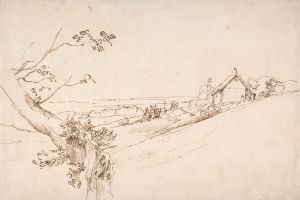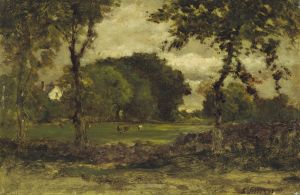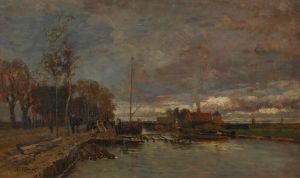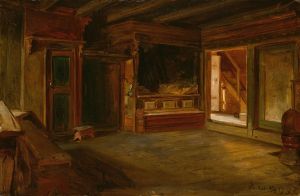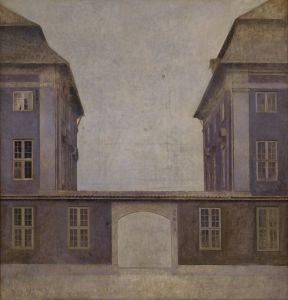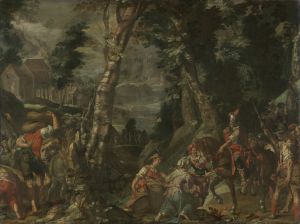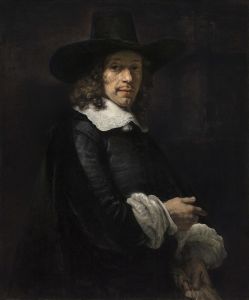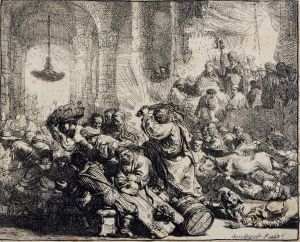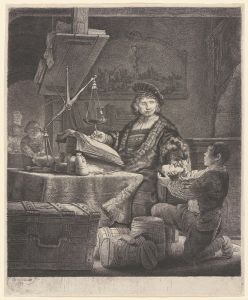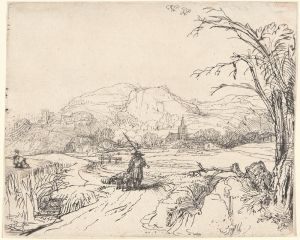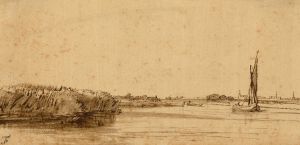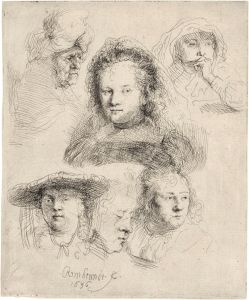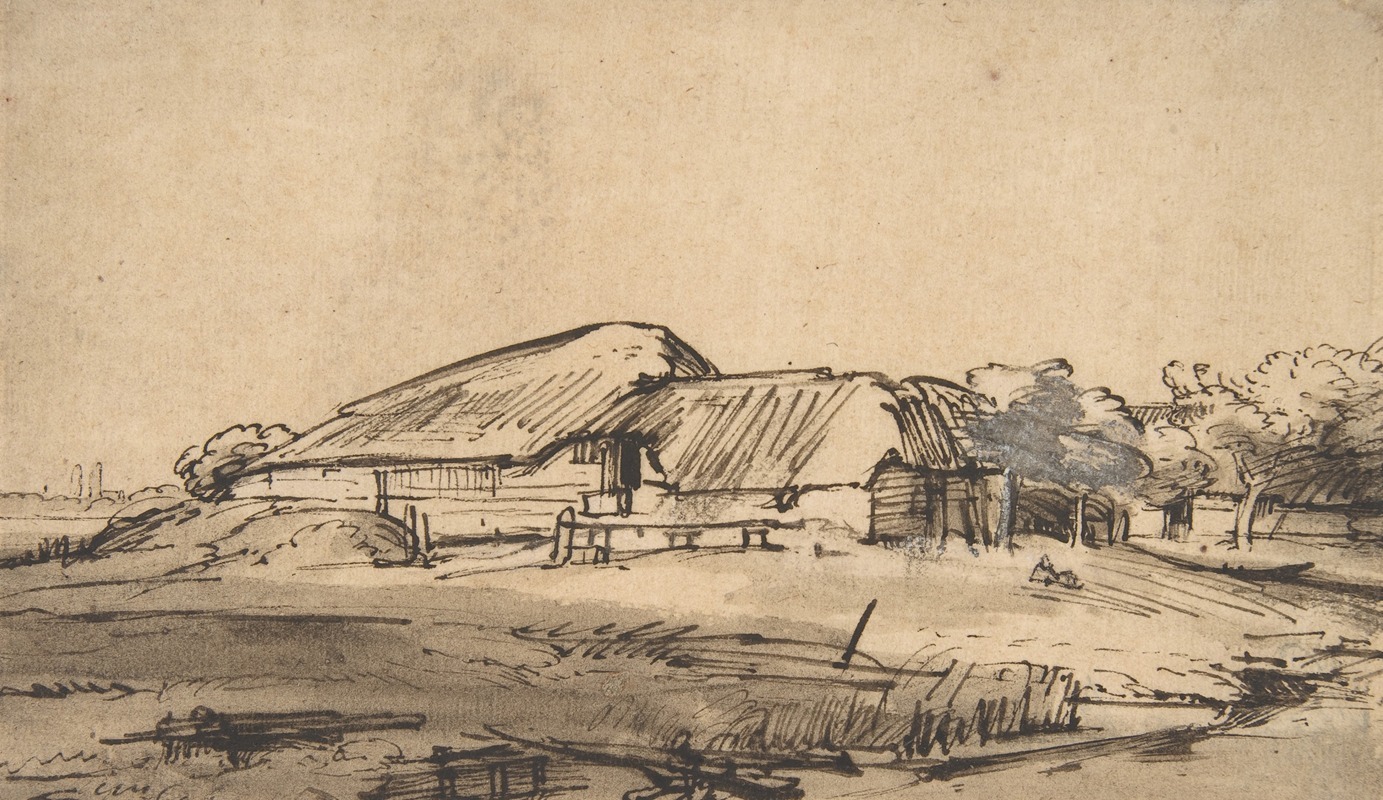
Group of Farm Buildings
A hand-painted replica of Rembrandt van Rijn’s masterpiece Group of Farm Buildings, meticulously crafted by professional artists to capture the true essence of the original. Each piece is created with museum-quality canvas and rare mineral pigments, carefully painted by experienced artists with delicate brushstrokes and rich, layered colors to perfectly recreate the texture of the original artwork. Unlike machine-printed reproductions, this hand-painted version brings the painting to life, infused with the artist’s emotions and skill in every stroke. Whether for personal collection or home decoration, it instantly elevates the artistic atmosphere of any space.
"Group of Farm Buildings" is a painting attributed to the renowned Dutch artist Rembrandt van Rijn. Rembrandt, born in 1606 in Leiden, is widely celebrated as one of the most important figures in European art history, particularly known for his contributions to the Dutch Golden Age of painting. His works are characterized by their rich detail, masterful use of light and shadow, and profound emotional depth.
The painting "Group of Farm Buildings" is an example of Rembrandt's landscape work, a genre he explored alongside his more famous portraits and biblical scenes. Although Rembrandt is primarily known for his portraits and historical scenes, his landscapes offer a glimpse into his versatility and his ability to capture the natural world with the same intensity and attention to detail.
This particular painting depicts a cluster of rural buildings, likely farmhouses, set within a serene landscape. The composition reflects Rembrandt's skillful use of chiaroscuro, a technique that employs strong contrasts between light and dark to achieve a sense of volume and three-dimensionality. The play of light across the buildings and the surrounding landscape creates a dynamic and atmospheric scene, drawing the viewer's eye into the depths of the painting.
Rembrandt's landscapes, including "Group of Farm Buildings," often convey a sense of tranquility and timelessness. They reflect his interest in the Dutch countryside and his ability to imbue even the simplest scenes with a sense of grandeur and significance. The painting captures the essence of rural life in the Netherlands during the 17th century, offering a window into the everyday world that existed alongside the bustling urban centers of the time.
While Rembrandt's landscapes are less numerous than his portraits, they are nonetheless an important part of his oeuvre. They demonstrate his keen observational skills and his ability to translate the subtleties of nature onto canvas. The attention to detail in "Group of Farm Buildings" is evident in the careful rendering of architectural elements and the natural environment, showcasing Rembrandt's dedication to capturing the world around him with precision and artistry.
The painting is believed to have been created during a period when Rembrandt was exploring various subjects and techniques, continually pushing the boundaries of his artistic practice. His landscapes, including this one, are marked by a sense of experimentation and a desire to capture the fleeting effects of light and atmosphere.
"Group of Farm Buildings" is housed in a collection that appreciates the breadth of Rembrandt's work, highlighting his contributions to landscape painting. It stands as a testament to his ability to find beauty and meaning in the everyday, transforming simple rural scenes into works of art that continue to resonate with viewers centuries after they were created.
In summary, "Group of Farm Buildings" exemplifies Rembrandt's mastery of landscape painting, showcasing his skillful use of light and shadow, his attention to detail, and his ability to capture the essence of the Dutch countryside. It remains an important piece within his body of work, reflecting his versatility and enduring influence on the art world.





